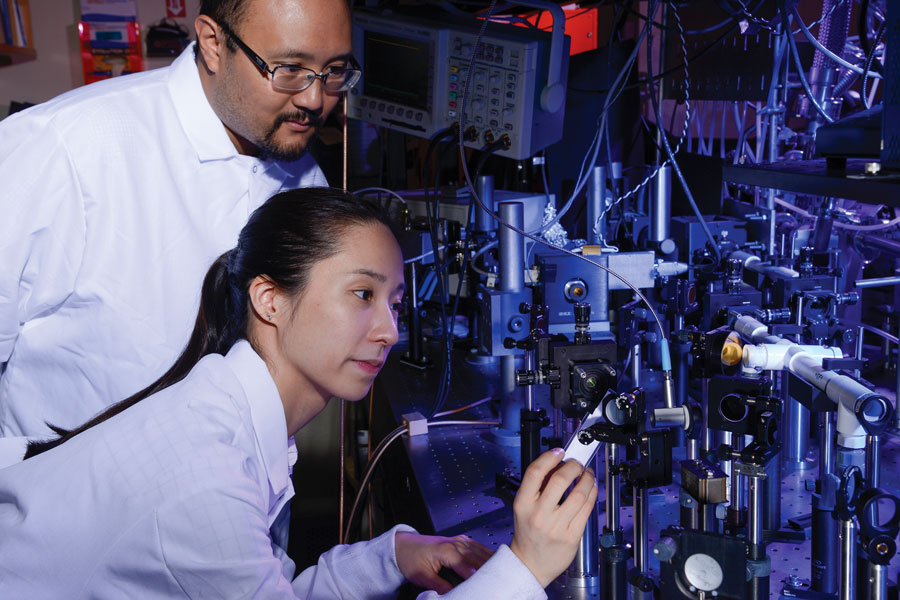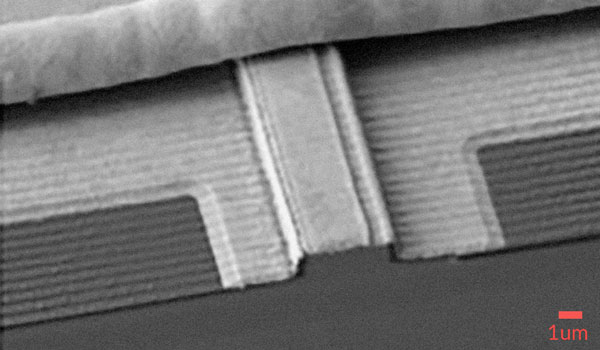Above:
Dr. Clifford Frez and PhD graduate student Aileen Hui working on the alignment of the MDL laser into the IRKS apparatus for OH measurements.
2.9 µ Laser
A Laser to Look at Ozone Depletion
Mathieu Fradet - Clifford Frez
Semiconductor lasers emitting near 2.9 µm are a critical component of compact and reliable spectroscopic sensors for the measurement of hydroxyl radicals, OH, which are crucial components of the atmospheres of Earth and Mars. For example, in Earth’s atmosphere, ozone, which is important in blocking short-wave UV from reaching the surface and is a key greenhouse gas, is controlled by reactions involving OH. New advances in compact, robust instruments have resulted from the use of mid-IR lasers that open the door to detection limits of parts per million or less, and could be deployed on small aircraft, balloons, and planetary probes.
To realize the development of such devices, the MDL semiconductor laser group teamed up with the State University of New York at Stony Brook (SUNY), a world leader in the development and epitaxial growth of diodes and type-I cascade diodes emitting in the 2 to 4 µm wavelength. This collaboration has led to the first single-frequency laterally coupled distributed feedback type-I cascade diode laser. This newly developed structure successfully bridged the gap in high-power semiconductor lasers near 3 µm. Lasers have been developed at 2.9 µm, the wavelength needed to measure a pair of fundamental rotational bands of the OH radical. To facilitate the study of the tropospheric impact of OH radials on ozone depletion and the cycle of greenhouse gases in Earth’s atmosphere, we delivered a single-frequency, high-power laser for the first OH measurements in the Infrared Kinetic Spectroscopy (IRKS) apparatus that reproduces conditions of pressure and temperature relevant to the atmospheres of Earth and Mars. The IRKS apparatus has also been used to study the rates of chemical reactions that control the abundance of OH in the atmosphere. These measurements will help researchers to understand the complex interactions of OH in the atmospheres of both planets.
Signal intensity measured at the detector as a function of the laser frequency. The dips in the signal are due to OH absorption using the MDL laser.
+ Larger image
Scanning electron microscope (SEM) image of MDL’s laterally coupled (LC) distributed feedback (DFB) laser. Lateral gratings along the ridge sidewall are written with electron-beam lithography, and the grating pitch selects the single-frequency emission wavelength.
+ Larger image




